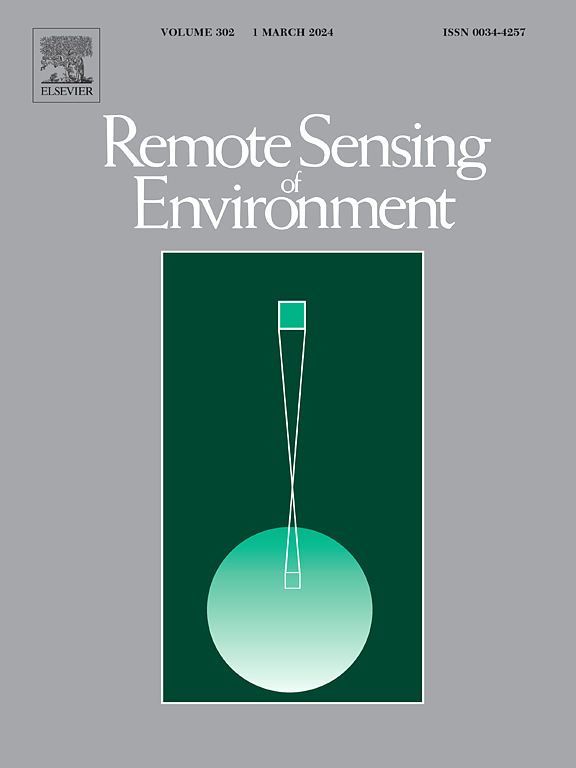GLOSTFM: A global spatiotemporal fusion model integrating multi-source satellite observations to enhance land surface temperature resolution
IF 11.1
1区 地球科学
Q1 ENVIRONMENTAL SCIENCES
引用次数: 0
Abstract
Land surface temperature (LST) data are crucial for global climate change research. While remote sensing data serve as a key source for LST, single-source sensor data often lack spatiotemporal continuity due to long satellite revisit intervals and cloud cover. Spatiotemporal fusion, which combines the strengths of multiple sources, can increase the available information. However, most current spatiotemporal fusion methods are designed for local-scale applications. This research proposes the Global Spatiotemporal Fusion Model (GLOSTFM) to generate global LST products. GLOSTFM, built on image pyramid principles, addresses the computational and complexity challenges of global-scale spatiotemporal fusion. Moreover, the model utilizes data from the novel Fengyun-3D satellite, which has a daily revisit capability and provides LST products separately derived from its thermal infrared (MERSI, 1 km) and microwave (MWRI, 25 km) sensors. By leveraging the cloud-penetrating capabilities of the microwave data to compensate for missing information, GLOSTFM increases the available information and reduces observational uncertainties. The results showcase high processing efficiency and enhanced spatiotemporal continuity, with an average RMSE of 2.874 K and an excellent R2 of 0.980. The utility of the GLOSTFM model for monitoring urban heat island effects in Beijing was explored to illustrate one application among a broad range of potential applications of the proposed GLOSTFM that require global data on LST across the Earth's surface.
求助全文
约1分钟内获得全文
求助全文
来源期刊

Remote Sensing of Environment
环境科学-成像科学与照相技术
CiteScore
25.10
自引率
8.90%
发文量
455
审稿时长
53 days
期刊介绍:
Remote Sensing of Environment (RSE) serves the Earth observation community by disseminating results on the theory, science, applications, and technology that contribute to advancing the field of remote sensing. With a thoroughly interdisciplinary approach, RSE encompasses terrestrial, oceanic, and atmospheric sensing.
The journal emphasizes biophysical and quantitative approaches to remote sensing at local to global scales, covering a diverse range of applications and techniques.
RSE serves as a vital platform for the exchange of knowledge and advancements in the dynamic field of remote sensing.
 求助内容:
求助内容: 应助结果提醒方式:
应助结果提醒方式:


